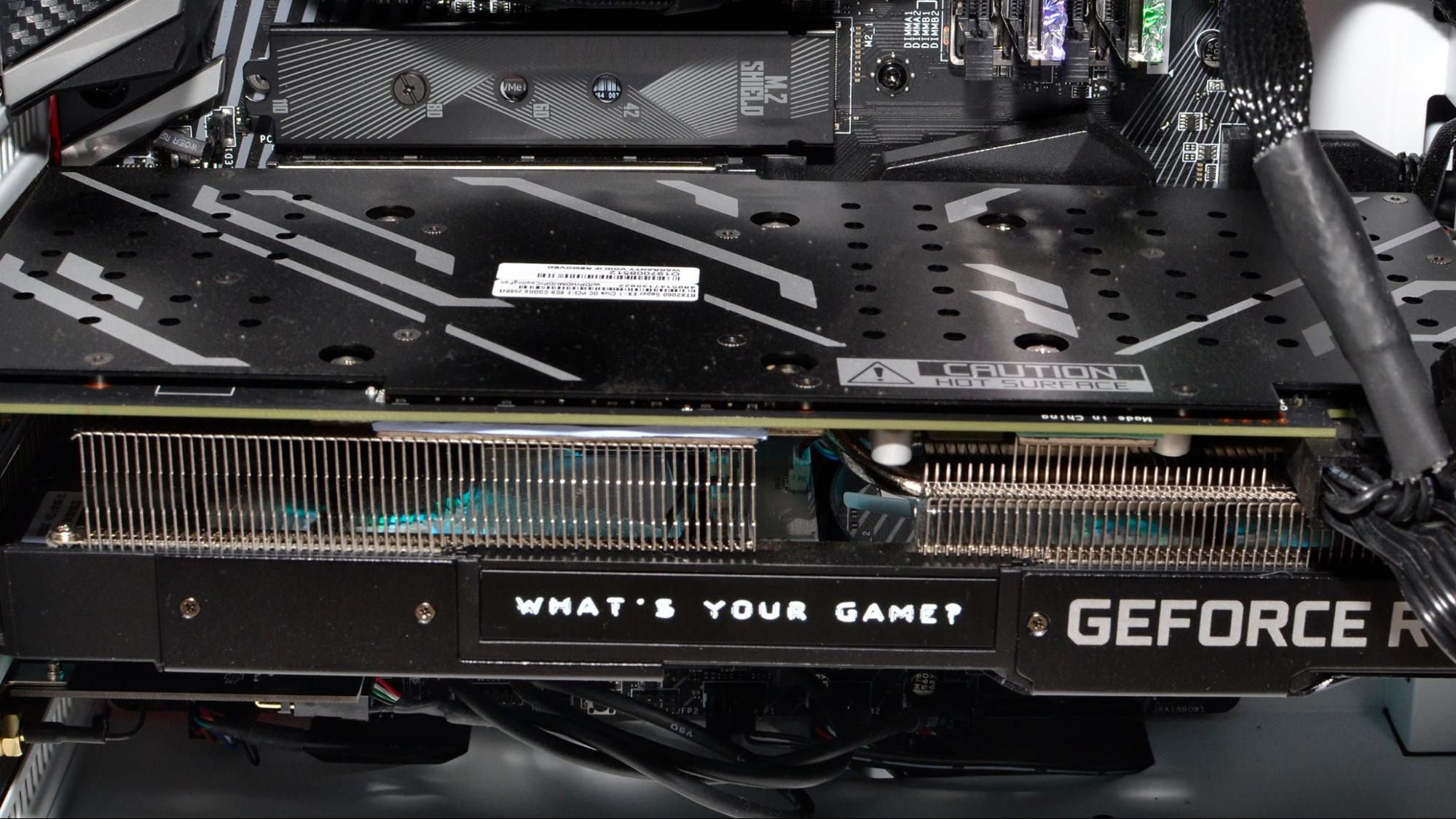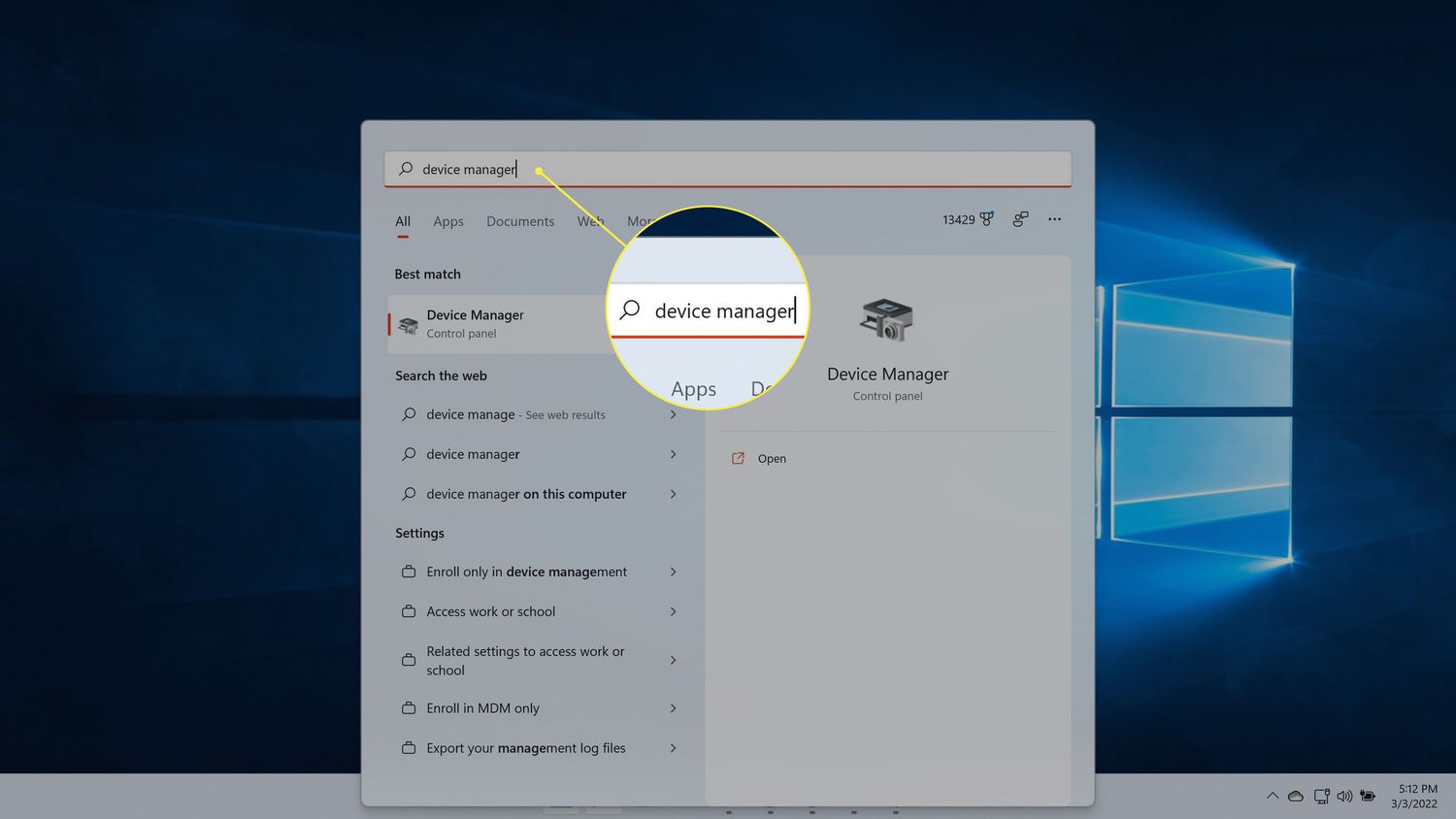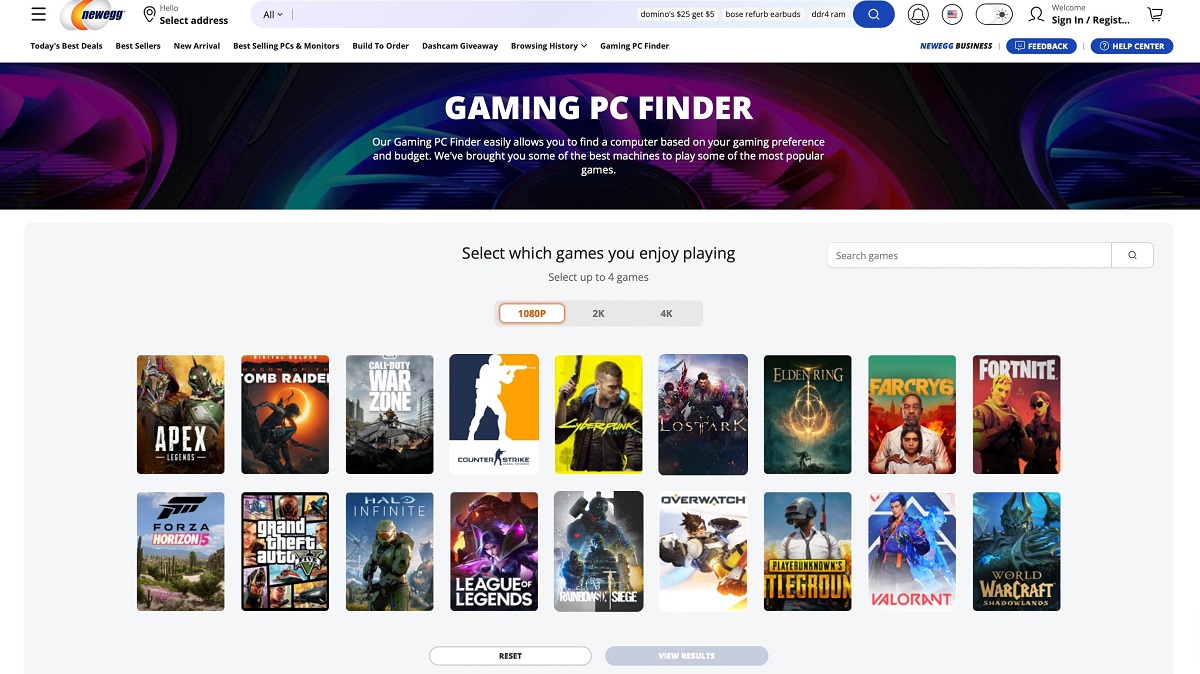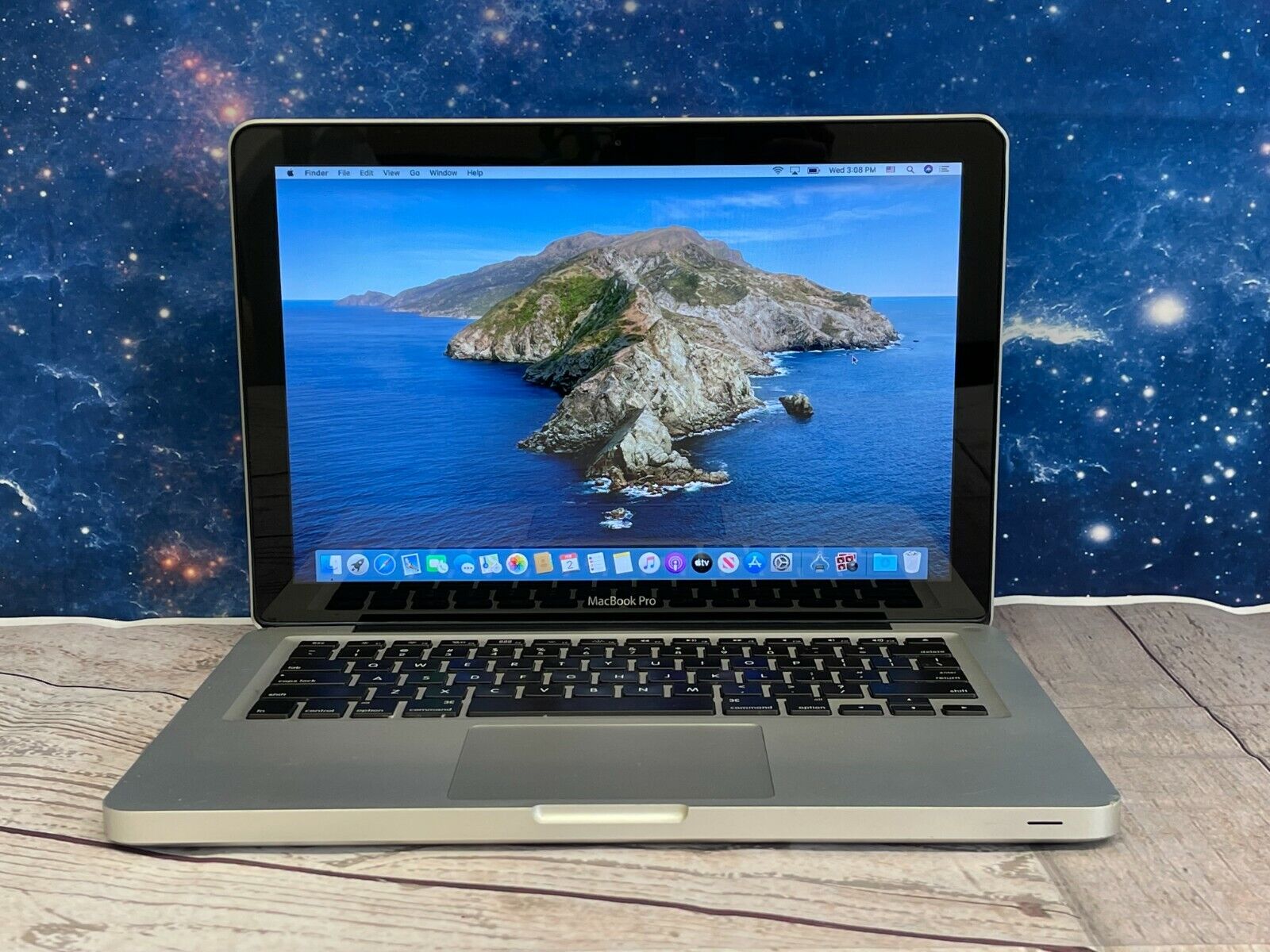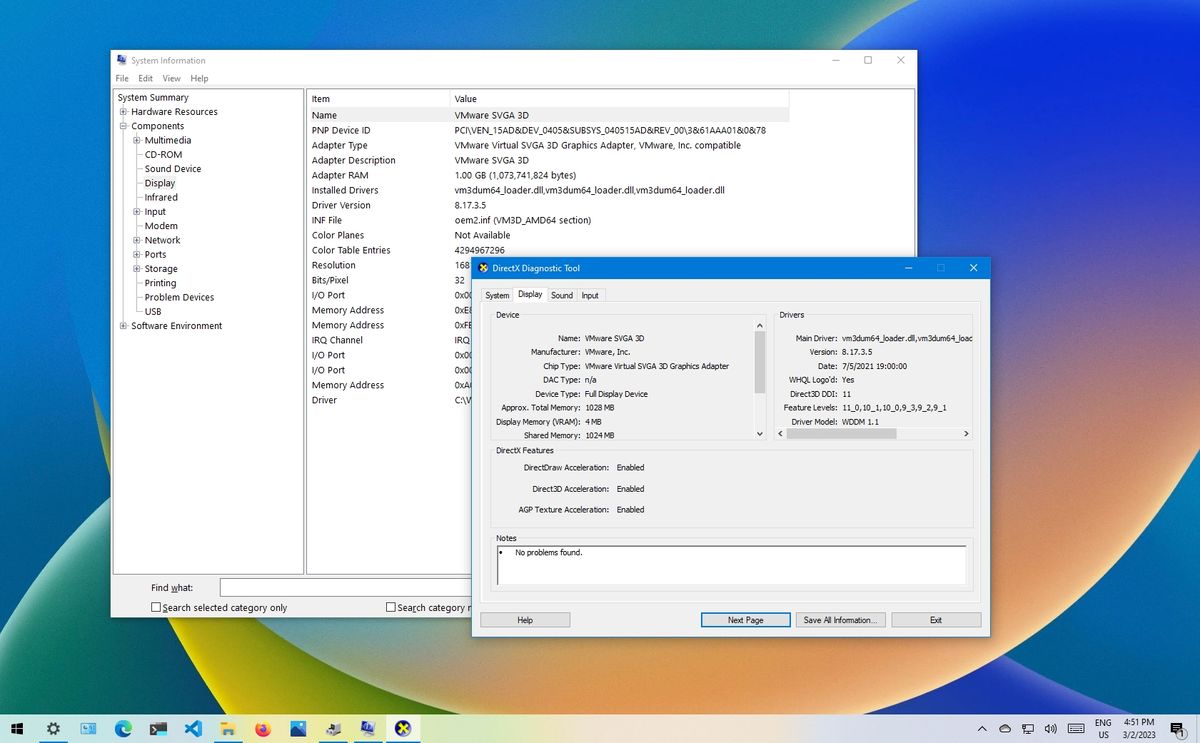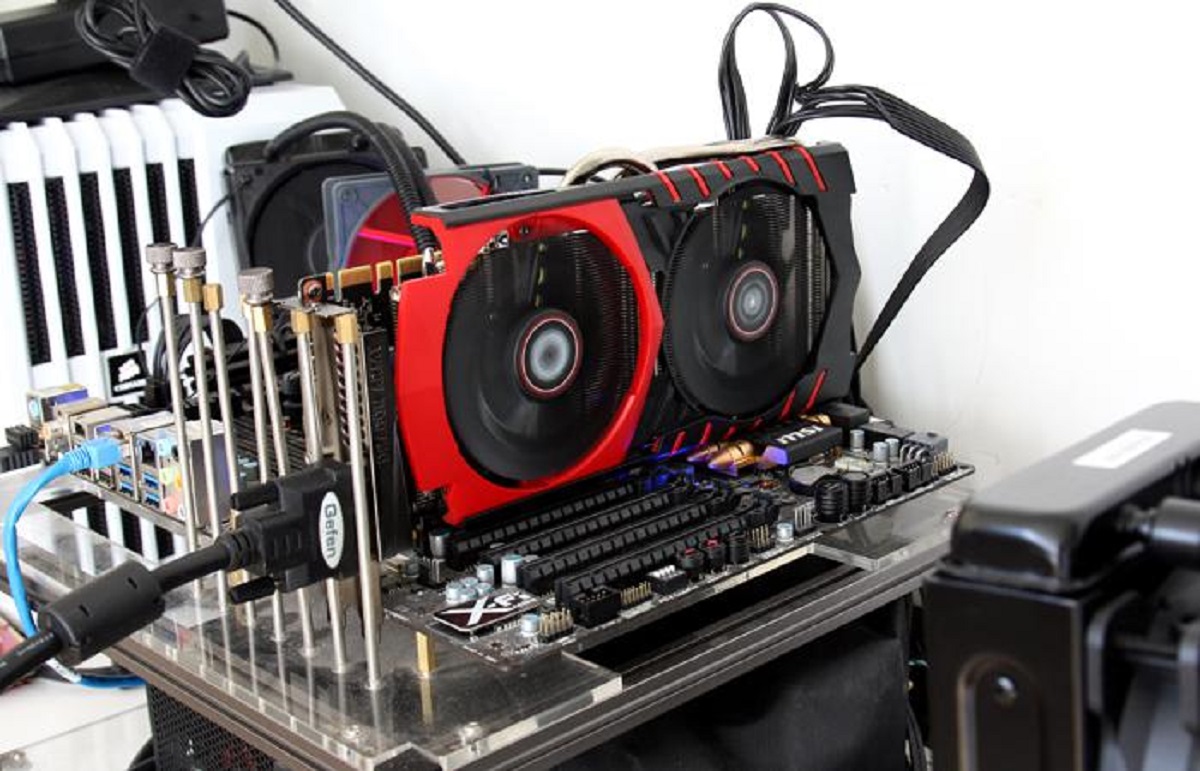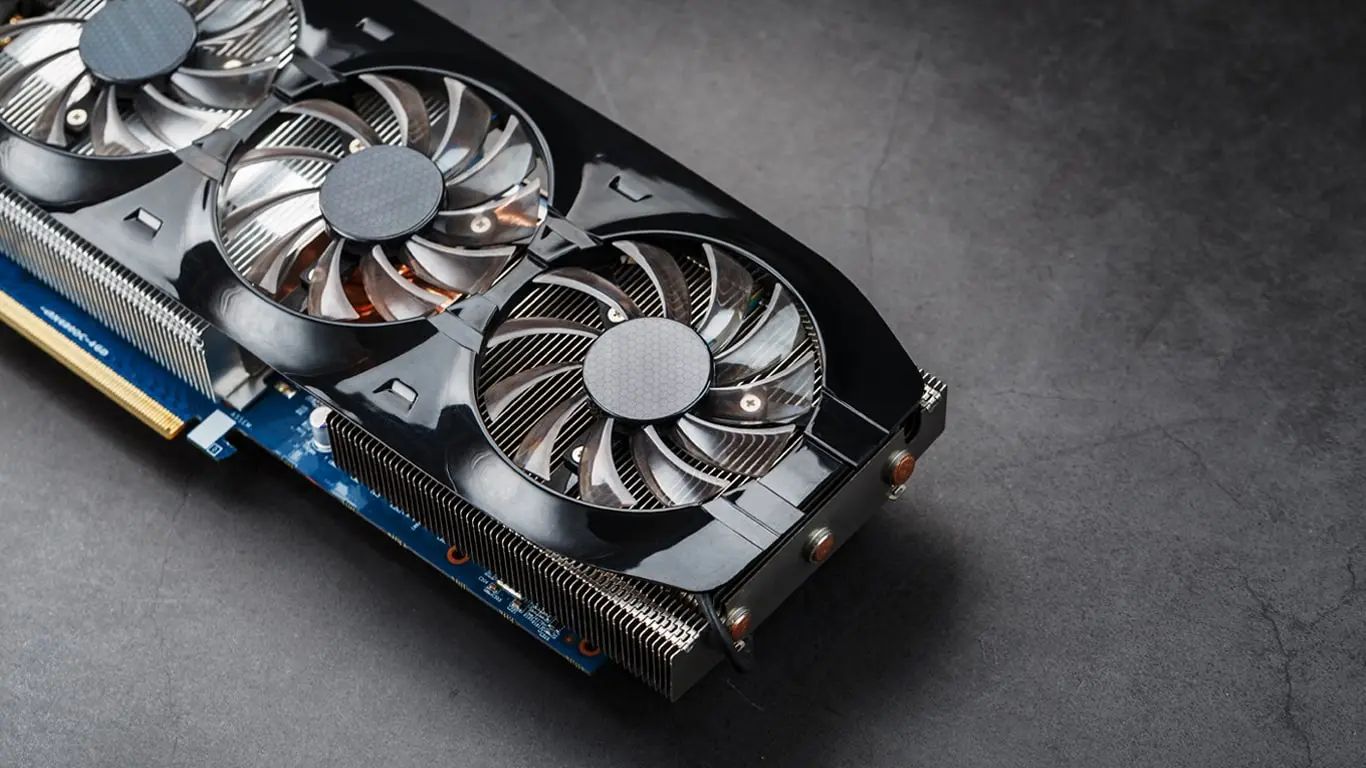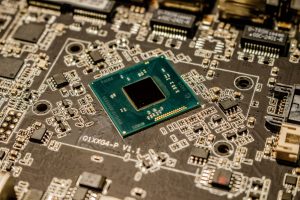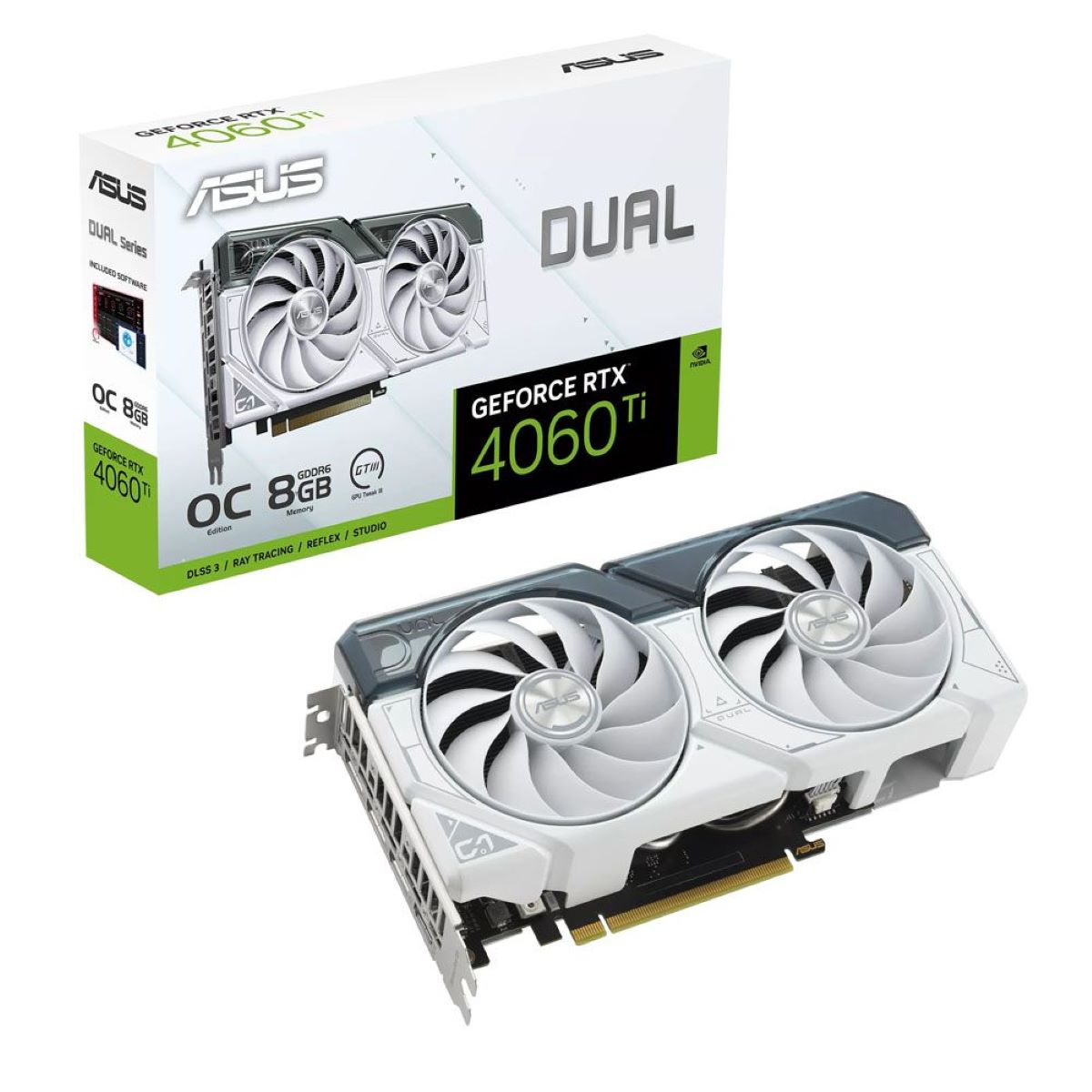Introduction
Choosing the right graphics card is crucial for gamers and graphic designers who want to experience stunning visuals and smooth performance on their computers. However, not all computers can handle high-end graphics cards, as they require specific hardware and software compatibility. Understanding the capabilities of your computer and the requirements of different graphics cards is essential in making an informed decision.
In this article, we will delve into the different factors that determine what kind of graphics card your computer can handle. From minimum system requirements to compatibility with the motherboard and physical space inside your computer case, we will explore the key considerations when selecting a graphics card for your machine. We will also discuss the importance of checking your power supply, as well as software and driver compatibility.
If you’re looking to upgrade your graphics card to enhance your gaming or editing experience, this article will serve as a comprehensive guide to help you make the right choice. By the end of this article, you will have a clear understanding of what to look for when determining the compatibility of a graphics card with your computer, allowing you to make an informed decision and optimize your system’s performance.
Understanding Graphics Cards
Graphics cards, also known as video cards or GPU (Graphics Processing Units), are essential components of a computer system responsible for rendering and displaying images, videos, and animations on the monitor. They handle complex calculations and transform raw data into visual output, ensuring smooth and vibrant visuals during gaming, video editing, and graphic-intensive tasks.
Modern graphics cards come with their own memory, called video RAM or VRAM, which stores and processes data related to graphics processing. This dedicated memory allows the graphics card to handle large amounts of data quickly, resulting in improved performance and visual quality.
Graphics cards also have their own processors, known as shaders or stream processors, which are specifically designed for parallel processing and handling complex 3D calculations. These processors work in conjunction with the CPU (Central Processing Unit) to handle graphics-related tasks, offloading the burden from the CPU and providing a dedicated processing power for graphics rendering.
Another important component of a graphics card is the cooling system. Graphics cards generate a significant amount of heat during operation, so they require efficient cooling mechanisms such as fans or heat sinks to prevent overheating. Proper cooling ensures optimal performance and prevents damage to the graphics card.
It is worth noting that not all graphics cards are created equal. Different models and brands offer varying levels of performance, features, and compatibility. Before choosing a graphics card for your computer, it is important to consider your specific needs and budget, as well as the technical specifications and requirements of the graphics card.
Understanding the inner workings and capabilities of graphics cards is crucial in determining the right fit for your computer. In the next sections, we will explore the minimum system requirements, power supply considerations, compatibility with the motherboard, physical space constraints, software and driver compatibility, and the process of upgrading your graphics card.
Minimum System Requirements for Graphics Cards
When choosing a graphics card for your computer, it is important to consider the minimum system requirements specified by the manufacturer. These requirements ensure that your computer can handle the processing power and memory demands of the graphics card, allowing it to function optimally.
The most crucial minimum system requirement is the operating system. Different graphics cards have specific compatibility with different operating systems such as Windows, macOS, or Linux. Ensure that your operating system is supported by the graphics card you are considering.
Another important factor to consider is the amount of RAM (Random Access Memory) in your system. Graphics-intensive applications require a sufficient amount of RAM to store and process data. Verify that your computer has enough RAM to meet the requirements of the graphics card. Upgrading your RAM may be necessary if your current RAM capacity is insufficient.
Graphics cards also have specific requirements for the CPU (Central Processing Unit) and its minimum clock speed. The CPU should be able to handle the calculations and processing required by the graphics card. Check the recommended CPU specifications provided by the graphics card manufacturer to ensure compatibility.
Power supply requirements are often overlooked but are critical for the stable and reliable performance of a graphics card. High-performance graphics cards consume a significant amount of power, so it is essential to have an adequate power supply unit (PSU) with the necessary wattage and connectors. Consult the graphics card specifications or manufacturer’s website to determine the power supply requirements and ensure your computer meets them.
Lastly, make sure your computer has the necessary interfaces and connectors to plug in the graphics card. The most common interface for graphics cards is the PCI Express (PCIe) slot. Check your motherboard specifications to ensure it has an available PCIe slot and that it is compatible with the specific generation of the graphics card you are considering.
By taking these minimum system requirements into account, you can ensure that the graphics card you choose is compatible with your computer system and will operate optimally. It is always advisable to check the manufacturer’s website or product documentation for detailed system requirements before making a purchase.
Checking Your Power Supply
The power supply unit (PSU) plays a crucial role in the performance and stability of your computer system, especially when it comes to powering high-performance graphics cards. Insufficient power supply to the graphics card can lead to system crashes, instability, and overall poor performance. Therefore, it is essential to check your power supply before installing a new graphics card.
The first step in checking your power supply is to determine the wattage of your existing PSU. The wattage indicates the maximum amount of power that the PSU can deliver to your system. It is recommended to have a power supply that meets or exceeds the minimum power requirements specified by the graphics card manufacturer.
To find out the wattage of your PSU, you can usually locate a sticker or label on the side or top of the power supply unit itself. This sticker will display the wattage, along with other important information such as voltage ratings and amperage. You can also refer to your computer’s user manual or visit the manufacturer’s website to find this information.
In addition to wattage, it is important to consider the number and type of power connectors that your power supply offers. High-performance graphics cards often require additional power connectors, such as 6-pin or 8-pin PCIe connectors, to provide the necessary power. Ensure that your power supply has the required connectors available. If not, you may need to upgrade your power supply unit.
Aside from wattage and connectors, it is also crucial to assess the overall quality and reliability of your power supply. Cheap or low-quality power supplies may not provide stable power output, which can damage your computer components, including the graphics card. It is worthwhile to invest in a high-quality power supply that offers protection features such as overvoltage and short-circuit protection.
If your existing power supply does not meet the power requirements of the new graphics card, it is strongly recommended to upgrade to a more powerful PSU. It is important to choose a power supply from a reputable manufacturer and ensure that it has sufficient wattage and the required connectors to support your graphics card and other system components.
Checking and upgrading your power supply may seem like a tedious process, but it is vital to ensure the smooth operation and longevity of your computer system when installing a powerful graphics card. Taking the time to assess your power supply and make any necessary changes will help prevent potential issues and maximize the performance of your graphics card.
Compatibility with Motherboard
When considering a graphics card upgrade, it is essential to ensure compatibility with your motherboard. The motherboard serves as the central hub that connects various components of your computer system, including the graphics card. Incompatibility between the graphics card and the motherboard can result in performance issues or the inability to install the graphics card altogether.
The primary factor to consider is the interface or slot type on your motherboard. The most common interface for graphics cards is the PCI Express (PCIe) slot. However, there are different versions of PCIe, such as PCIe 3.0 or PCIe 4.0, each with varying speeds and bandwidth capabilities. Check your motherboard’s specifications to determine the version of PCIe slots it supports, as well as the number of available PCIe slots.
Furthermore, it is crucial to consider the physical size of the graphics card and the available space on your motherboard. Some high-performance graphics cards come in larger sizes and may require more than one PCIe slot. Ensure that your motherboard has the necessary space and compatibility for the graphics card you intend to install.
Another important consideration is the compatibility of the graphics card with the chipset and BIOS of your motherboard. The BIOS (Basic Input/Output System) is responsible for the initialization and configuration of hardware components, including the graphics card. Ensure that your motherboard’s BIOS version is compatible with the graphics card, as manufacturers sometimes release updates to support newer graphics card models.
In addition to the physical and chipset compatibility, it is essential to review the technical specifications provided by the graphics card manufacturer. Look for any specific requirements or recommendations related to motherboard compatibility. Sometimes, certain graphics cards require a specific generation of the chipset or a specific firmware version to function optimally.
Lastly, consider the overall performance and capabilities of your motherboard. A graphics card may be physically compatible with your motherboard, but if your motherboard has limited performance capabilities, it may bottleneck the performance of the graphics card. Before upgrading your graphics card, it is recommended to assess the overall performance and future upgrade potential of your motherboard.
By ensuring compatibility between your graphics card and motherboard, you can avoid potential issues and enjoy optimal performance from your upgraded graphics card. Consulting the motherboard’s specifications, manufacturer’s recommendations, and checking for any BIOS updates will help you make an informed decision and ensure a seamless installation process.
PCI Express Slots
When considering a graphics card upgrade, it is important to understand the different types of PCI Express (PCIe) slots and their implications for compatibility and performance. PCIe is the most common interface used for connecting graphics cards to the motherboard, offering high-speed communication and efficient data transfer.
The most widely used PCIe slot for graphics cards is PCIe x16, which provides 16 lanes of data transfer. This slot offers the best performance and is capable of accommodating high-end graphics cards that demand significant bandwidth. Most modern motherboards have at least one PCIe x16 slot, and this is the preferred slot for installing your graphics card to achieve maximum performance.
In addition to the PCIe x16 slot, there are also PCIe x1 and PCIe x4 slots available on some motherboards. These slots have fewer lanes and are usually used for other expansion cards such as network adapters or sound cards. While it is possible to install a graphics card in these slots using an adapter, the limited bandwidth may result in reduced performance compared to using a PCIe x16 slot.
It is important to note that PCIe slots are backward compatible, meaning you can install a PCIe x1 or PCIe x4 card in a PCIe x16 slot. However, the card will operate at the slower speed of the slot it is inserted into. Similarly, you can install a PCIe x16 graphics card in a PCIe x1 or PCIe x4 slot, but it will also operate at the lower speed of the slot.
When selecting a graphics card, it is essential to check the requirements specified by the manufacturer. The graphics card will indicate the PCIe version it supports (e.g., PCIe 3.0, PCIe 4.0) and the slot size it requires (e.g., PCIe x16). Ensure that your motherboard has a compatible slot available to accommodate the graphics card.
In some cases, larger graphics cards that require more physical space may require more than one PCIe slot. These cards are often referred to as dual-slot or triple-slot cards and may occupy adjacent PCIe slots on the motherboard. It is important to check your motherboard’s specifications and physical layout to ensure that you have the necessary slots available and enough space to accommodate the graphics card.
Understanding the different PCIe slots and their compatibility with graphics cards is crucial in selecting the right graphics card for your system. By ensuring a compatible PCIe slot and understanding the implications of different slot sizes, you can optimize the performance of your graphics card and avoid any potential compatibility issues during installation.
Physical Space Inside the Computer Case
When considering a graphics card upgrade, it is important to assess the physical space available inside your computer case. Graphics cards vary in size, with some high-performance models being larger and occupying more space. Ensuring that your computer case can accommodate the size of the graphics card is crucial for a successful installation.
The first step is to measure the available space inside your computer case. This includes both the length and width dimensions. Most graphics card manufacturers provide the dimensions of their products, so you can compare them to the available space in your case. It is important to leave some clearance around the graphics card to ensure proper airflow and prevent overheating.
Take note of any obstacles that may obstruct the installation of a larger graphics card. These obstacles can include drive bays, cables, or other components mounted near the PCIe slots. The graphics card should not interfere with other components or cause any physical damage when installed.
Consider the form factor of your graphics card and whether your computer case is designed to accommodate it. The most common form factor for graphics cards is the ATX form factor. However, there are smaller form factors such as Micro-ATX and Mini-ITX that require a specific computer case size and layout. Ensure that your computer case is compatible with the form factor of the graphics card you intend to install.
In some cases, larger graphics cards may require additional power connectors or cooling mechanisms that take up even more space inside the computer case. Make sure that your case has the necessary provisions for these additional components and that they will not interfere with the installation or operation of the graphics card.
If your computer case does not have enough space to accommodate a large graphics card, you may need to consider upgrading to a larger case. There are numerous options available on the market that cater to different form factors and provide ample space for high-performance graphics cards. However, keep in mind that transferring your components to a new case may require some technical knowledge and effort.
By considering the physical space inside your computer case, you can ensure a proper fit for your graphics card and avoid any compatibility or installation issues. Taking measurements, assessing clearance, and checking for any obstacles will help you choose a graphics card that fits seamlessly into your system, allowing for optimal performance and longevity.
Cooling and Heat Dissipation
Cooling and heat dissipation are critical factors to consider when selecting a graphics card for your computer system. Graphics cards generate a significant amount of heat during operation, especially high-performance models, and proper cooling is essential to maintain optimal performance and prevent damage.
Graphics cards typically come with their own cooling systems, which can include fans, heatsinks, and heat pipes. These components are designed to dissipate the heat generated by the graphics card’s processors and keep the temperature within a safe operating range. It is important to choose a graphics card with an efficient cooling solution that suits your specific needs.
The cooling system should match the thermal requirements of the graphics card and the thermal characteristics of your computer case. It is important to check the manufacturer’s specifications for information on the cooling system and its ability to handle the heat generated by the graphics card. Some high-performance graphics cards may require additional cooling measures, such as multiple fans or liquid cooling systems.
In addition to the graphics card’s built-in cooling system, it is crucial to ensure proper airflow within your computer case. Adequate airflow helps dissipate heat not only from the graphics card but also from other components in your system. Make sure that the computer case has sufficient ventilation and that the airflow is not obstructed by cables or other components.
Consider the layout and arrangement of the components within your computer case. The positioning of the graphics card and other components can affect airflow and heat dissipation. It is generally recommended to leave some space between the graphics card and other components to allow for proper airflow and prevent heat buildup.
Regular maintenance is essential to keep the cooling system and overall airflow effective. Clean the fans and heatsinks regularly to remove dust and debris that can obstruct airflow and reduce cooling performance. Additionally, monitor the temperatures of your graphics card and other components using software tools, and take action if temperatures are consistently too high.
If you plan to overclock your graphics card, which involves running it at higher clock speeds for increased performance, cooling becomes even more critical. Overclocking generates more heat, so you may need to invest in more robust cooling solutions, such as aftermarket fans or liquid cooling systems, to ensure stability and prevent overheating.
By considering the cooling requirements and ensuring proper heat dissipation, you can enhance the longevity and performance of your graphics card. A well-cooled graphics card will operate within safe temperature limits, reducing the risk of thermal throttling or damage. Paying attention to cooling and maintaining proper airflow will contribute to a stable and efficient computer system.
Software and Driver Compatibility
When upgrading your graphics card, it is essential to consider the software and driver compatibility to ensure optimal performance and functionality. The graphics card’s drivers and software interact directly with the operating system and other software applications, enabling them to take full advantage of the graphics card’s capabilities.
Before purchasing a new graphics card, check the manufacturer’s website or documentation for information on the supported operating systems. Ensure that the graphics card is compatible with your particular operating system, whether it is Windows, macOS, or Linux. Using a graphics card with unsupported operating systems may result in limited functionality or no driver support.
Keep in mind that older operating systems may have limited driver support for newer graphics card models. When upgrading your graphics card, it is generally recommended to use the latest version of the operating system to ensure access to the most up-to-date drivers and software.
Graphics card manufacturers regularly release driver updates that provide bug fixes, performance optimizations, and improved compatibility with the latest software and games. Before installing a new graphics card, make sure to download and install the latest drivers from the manufacturer’s website. Outdated drivers can lead to stability issues, reduced performance, or incompatibility with newer software applications.
Sometimes, conflicts can occur between the graphics card driver and other software or drivers installed on your computer. If you experience any compatibility issues or performance problems, it is advisable to check for updates for all relevant software and drivers involved, including the graphics card driver, motherboard drivers, and other peripheral drivers.
In addition to driver compatibility, consider any additional software that comes bundled with the graphics card. This software may include utilities for overclocking, controlling fan speeds, or enhancing the visual settings. Ensure that the bundled software supports your operating system and offers the features you desire. Some users may prefer to have minimal software interventions, while others may appreciate the additional control and customization options.
Lastly, consider the availability of community support and resources for the graphics card and its associated software. Online forums, user communities, and official support channels provided by the manufacturer can be valuable sources of information and assistance if you encounter any compatibility or software-related issues.
By ensuring software and driver compatibility, you can maximize the performance and functionality of your graphics card. Regularly updating drivers and staying informed about the latest software releases will help you take full advantage of your graphics card’s capabilities, ensuring a smooth and enjoyable computing experience.
Upgrading the Graphics Card
Upgrading the graphics card can breathe new life into your computer system, enhancing its performance and allowing you to enjoy the latest games and high-resolution visuals. Before diving into the upgrade process, there are a few key considerations to keep in mind.
The first step is to determine the compatibility of the graphics card with your existing system components, including the motherboard, power supply unit (PSU), and case. Ensure that your motherboard has an available and compatible PCIe slot for the graphics card. Check the power supply’s wattage and connectors to ensure it can support the power requirements of the new graphics card. Additionally, make sure that your computer case has enough physical space to accommodate the size of the new graphics card.
Research different graphics card options based on your needs and budget. Consider factors such as the type and intensity of the applications you use, the resolution and refresh rate of your monitor, and any specific features you require, such as support for virtual reality or multi-monitor setups. Read reviews and comparisons to find the best match for your requirements.
Before installing the new graphics card, it is crucial to remove the old drivers completely. Use a driver uninstallation utility or the manufacturer’s uninstallation tool to ensure a clean slate for the new drivers. Once the old drivers are removed, power down your computer and carefully remove the old graphics card from the PCIe slot.
Insert the new graphics card into the available PCIe slot, ensuring it is properly seated and aligned. Secure the graphics card to the case using the necessary screws or latches. Connect the required power cables from the power supply to the graphics card, ensuring a secure and proper connection.
After installing the new graphics card, power on your computer and install the latest drivers provided by the manufacturer. Download the drivers from their official website and follow the installation instructions. It is recommended to perform a clean installation of the drivers to avoid any conflicts or issues.
Once the drivers are installed, reboot your computer and configure the graphics settings according to your preferences. Adjust resolution, refresh rate, and other visual settings as desired. Test the performance of the graphics card by running demanding games or applications and monitor the temperatures to ensure optimal cooling and stability.
In some cases, upgrading the graphics card may also require upgrading other components, such as the power supply or RAM, to maintain a balanced and efficient system. Assess your overall system requirements and consult with experts or online communities if you are unsure about the compatibility or potential bottlenecks.
Remember to periodically check for driver updates and maintain overall system cleanliness to keep your graphics card performing at its best. With proper research, installation, and maintenance, upgrading the graphics card can significantly enhance your computing experience and allow you to enjoy the latest advancements in visual technology.
Conclusion
Choosing the right graphics card for your computer system involves considering various factors, including compatibility, power requirements, cooling, and software support. Understanding the minimum system requirements, checking your power supply, assessing motherboard compatibility, and ensuring proper cooling are essential steps in determining what kind of graphics card your computer can handle and upgrading to a suitable option.
By understanding the inner workings of graphics cards, such as the role of GPU, memory, and cooling systems, you can make informed decisions about which graphics card suits your needs best. Taking into account the physical space inside your computer case, connectivity options, and software and driver compatibility will ensure a successful and efficient upgrade process.
When upgrading your graphics card, it is important to go through the necessary steps of removing old drivers, installing the new graphics card correctly, and updating drivers to optimize performance and stability. Regularly checking for driver updates and maintaining a well-ventilated system will ensure that your graphics card functions optimally over its lifespan.
Remember to research different graphics card options, read reviews, and consider your specific needs and budget before making a final decision. Seeking assistance from online communities or experts can provide additional guidance and support throughout the upgrade process.
With the right graphics card, you can elevate your computer’s performance, enjoy stunning visuals, and take full advantage of the capabilities of modern games and applications. By understanding the factors involved in graphics card compatibility and upgrade procedures, you can make an informed decision and reap the benefits of a high-performance system.







